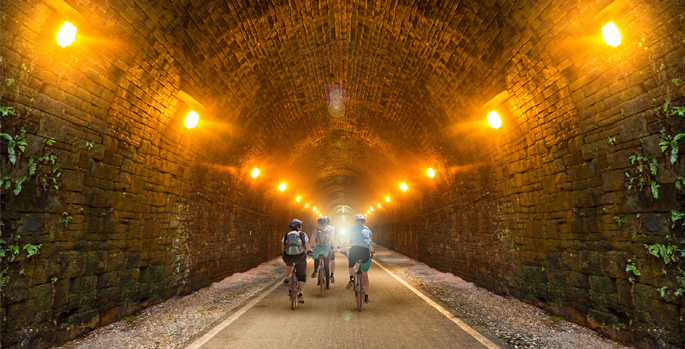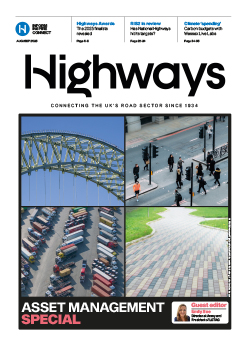The Department for Transport (DfT) has approved plans to permanently close Queensbury Tunnel, despite active travel partners Sustrans providing alternative low-cost options.
The Queensbury Tunnel spans 2.2km and was built in the 1870s to host a railway between Halifax and Keighley. However, the route was abandoned in the 1960s.
Future of transport minister Lilian Greenwood said in a letter to the campaign group Queensbury Tunnel Society that converting the tunnel to an underground cycle and footpath did not offer ‘best value for the public purse’.
She said she supported the plans from National Highways’ Historic Railways Estate team to partially fill shafts and stabilise the structure.
According to the BBC, between 2018 and 2021 National Highways spent £7.2m on strengthening the tunnel to 'prevent further uncontrolled collapses, ensuring that any future plans for the re-use of the structure can be realised'.
Campaigners say work to complete the project, and thus allow an active travel route through the tunnel, would cost in the region of £16m.
A feasibility study published earlier this year by Sustrans provided three options for how the tunnel could be converted, including one low-cost alternative.
Sustrans found that the route would improve local connectivity and generate £3 in social, economic and tourism benefits for every £1 spent on it.
It concluded: ‘Development of an iconic and nationally significant network of routes between these sizeable northern conurbations has multiple benefits over and above purely hard economic factors.’
When approached for comment by Highways, a spokesperson said: ‘Sustrans were asked by Bradford Council to conduct a study into the feasibility of turning it into England’s longest cycle and pedestrian tunnel.
'This study looked at the costs of this, alongside the social, economic and tourism benefits. The report's findings were considered by the council and the Government, alongside other options to deliver active travel connections in the area.
‘Following this, we have received a letter from the Government indicating the intention to permanently close the tunnel on safety grounds.’
A spokesperson for the DfT said: ‘Given the continued deterioration of the Queensbury Tunnel, and in the absence of local funding to develop it as a transport link, National Highways has been instructed to carry out works to maintain public safety.
‘This has been a difficult decision but ultimately, we have a responsibility to safety and delivering value for the taxpayer.’
Helene Rossiter, head of the Historical Railways Estate at National Highways, said: 'Following the government's decision on Queensbury Tunnel, we will begin the process to stabilise the tunnel safely and securely.'
Absence of local funding
The lack of a local supply of cash may be partially caused by the delayed publication of the third Cycling and Walking Investment Strategy (CWIS 3).
Highways previously reported that Simon Lightwood, parliamentary under-secretary of state for local transport, expected the third strategy to be published 'following the conclusion of the Spending Review'. However, with the Spending Review concluded over a month ago on 11 June, there has still been no sign of the CWIS 3.
When Highways approached the DfT about a possible publication date, the department said that it intends to publish the strategy later this year.
Image credit: Queensbury Tunnel Society/Four by Three






